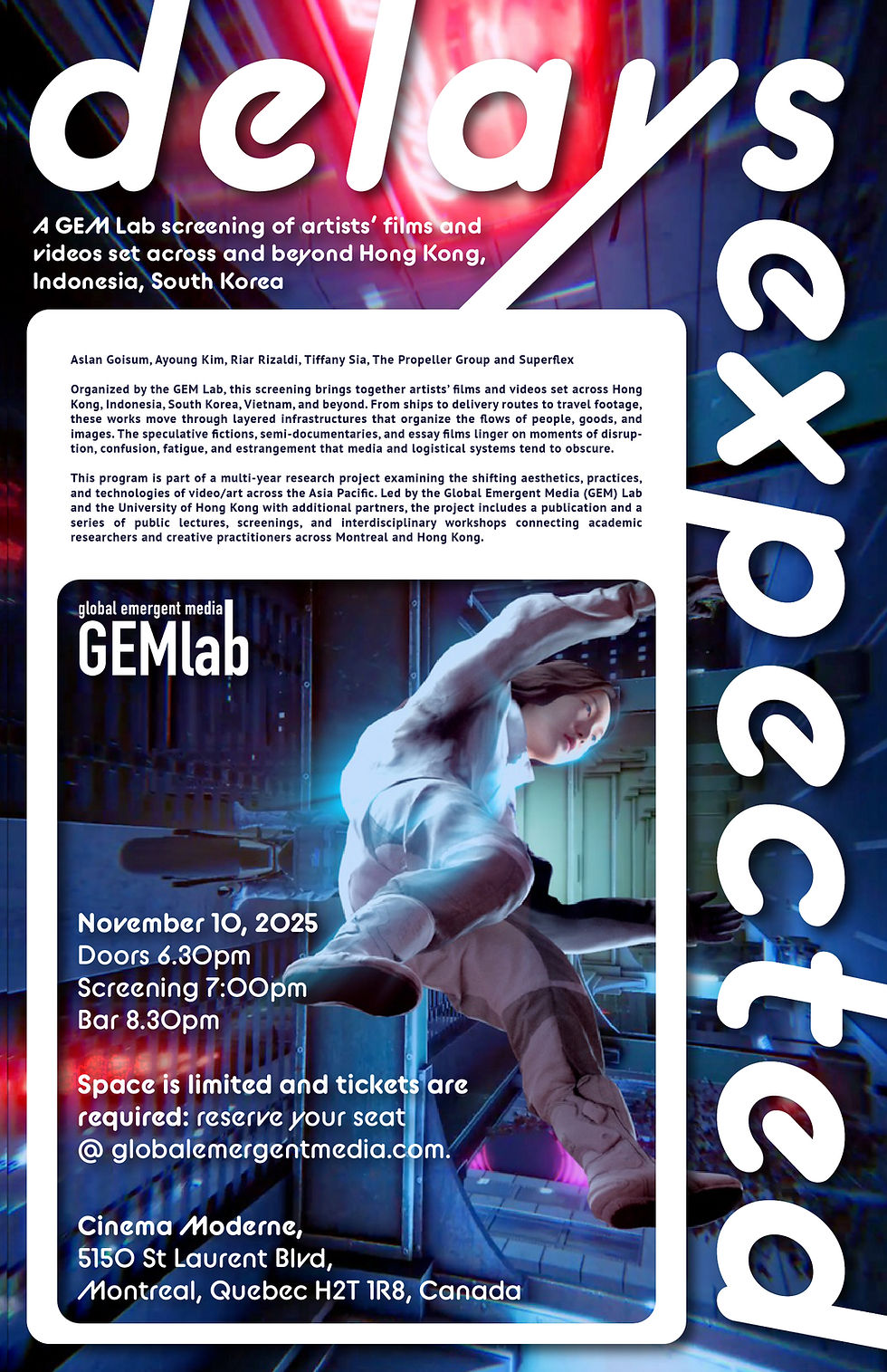Keynote talk: Akira Mizuta Lippit
- GEM LAB

- Oct 26, 2016
- 2 min read
Keynote talk of the Workshop on Media Ecologies
“Toward an Ecology of the Super Flatline: Murakami Takashi at the End of History”
Akira Mizuta Lippit
University of Southern California
Thursday, December 1, 17:00-18:30
Wendy Patrick Room, Wilson Hall, 3506 University Street

Abstract: The paper takes as its point of departure, the infamous footnote in Alexandre Kojève’s Introduction to the Reading of Hegel: Lectures on thePhenomenology of Spirit, in which he locates life after the end of history in two posthuman ecologies: American materialism and ultimately, Japanese formalism. For Kojève, life after history, begins with a return to animality and ends, as it were, in what he calls Japanese snobbery. Because Japan has formalized the living of life, human beings live at a distance from life. Of particular note is the relations between form, flatness, and lines. This paper takes up the case of “Superflat” artist Murakami Takashi and explores ways in which his artwork renders life after the end of history, but also the formal relations that anime and otaku cultures he addresses introduces new lines and flatlines into the posthistorical ecology.
Bio: Akira Mizuta Lippit teaches film and literature at the University of Southern California. His books include: Cinema without Reflection: Jacques Derrida’s Echopoiesis and Narcissism Adrift (2016); Ex-Cinema: From a Theory of Experimental Film and Video (2012); Atomic Light (Shadow Optics)(2005); and Electric Animal: Toward a Rhetoric of Wildlife (2000).Akira Mizuta Lippit teaches film and literature at the University of Southern California. His books include: Cinema without Reflection: Jacques Derrida’s Echopoiesis and Narcissism Adrift (2016); Ex-Cinema: From a Theory of Experimental Film and Video (2012); Atomic Light (Shadow Optics)(2005); and Electric Animal: Toward a Rhetoric of Wildlife (2000).



Comments